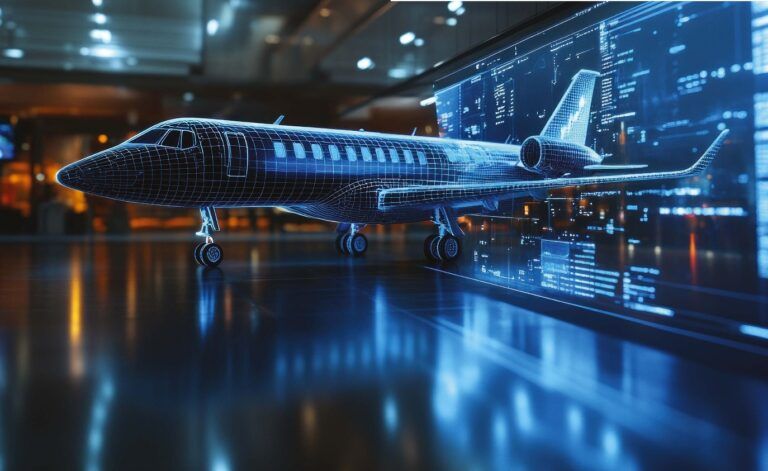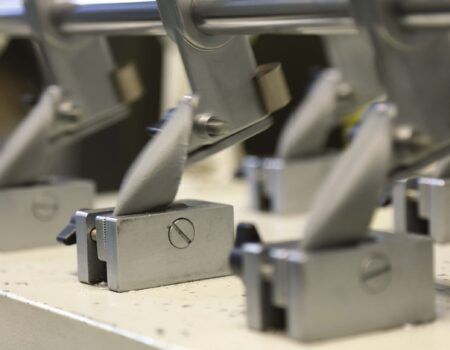Avionics systems play a pivotal role in modern aircraft design, and factors such as innovation in Artificial Intelligence and Machine Learning, changing standards and cybersecurity concerns are exerting pressure on test engineers to use agile and rigorous solutions.
As aircraft become more software-defined and interconnected, testing methodologies must evolve to meet the demands of modern systems. Standards organizations must adapt certification requirements to keep pace with advancing avionics technologies.
The most significant recent technological breakthroughs in avionics testing equipment have mirrored the advances in the avionics themselves, according to Ed Latimer, director of avionics test at VIAVI Solutions. Legacy solutions were often designed for specific applications and therefore not easily updated as new technologies and standards emerged.
“Today, most avionics devices and associated test equipment have their capabilities written in software, which enables field upgrades and extends the life of the systems well beyond their original intent,” Latimer says. VIAVI Solutions has leveraged this capability in most of its avionics test equipment, prolonging the longevity of solutions by allowing it to add the latest standards, and by providing software upgrades to many products.
One example is the AVX-10K flight line test set, which Latimer says provides technicians with an easy-to-use instrument for testing antennas, cables, communication, navigation, surveillance, and Emergency Locator Transmitter systems.

“The advances in Central Processing Unit [CPU], Field Programmable Gate Array [FPGA], and Digital Signal Processor [DSP] chip design have given us the capability to combine more features together than ever before, while minimizing size, weight, and power to keep battery run time as long as possible,” he says.
One of the newest specific breakthroughs is on the PSD90-3 fuel quantity test set, which has added the ability to detect contaminated probes without the need to physically inspect the tank sensors. “It allows a user to test, troubleshoot, and isolate any AC or DC capacitive fuel, water, liquid oxygen, or engine oil system issue, calibrate the cockpit indicators, and detect contaminated probes when combined with an aircraft-specific interface,” Latimer adds.
FULL SYSTEM SIMULATION
Avionics testing has shifted from isolated component validation to full-system simulation in iron birds or e-birds, supporting pilot-in-the-loop testing, bypassing, and restbus simulation. This allows early validation of embedded systems under realistic conditions.
Yves Gerster, chief business development officer at Speedgoat says, “Airbus uses Speedgoat systems to adjust flight controller parameters live during their Iron Bird tests, accelerating development significantly.”
Gerster believes that two of the key enablers for such breakthroughs are real-time digital twins and hardware-in-the-loop (HIL) platforms running full aircraft simulations at MHz loop-rates and FPGA-programmable I/O connectivity modules for deterministic, low-latency sensor as well as actuator interfacing.

More designs now use digital twinning to reduce technical and schedule risk. Erik Goethert, senior director business development and strategic marketing at UEI. “We can simulate or stimulate the inputs and outputs to the equipment using model-based design in these digital twins,” he adds.
Antoine Colin, chief technical offer at Rapita Systems, also singles out the ability to verify multicore systems for DO-178C and AMC-20-193 compliance. This, he explains, addresses the challenge of timing interference in shared-resource environments, as another key breakthrough.
AI INTEGRATION
Artificial Intelligence (AI) and Machine Learning (ML) continue to loom large in technological considerations, and there is evidence that both technologies are being integrated into testing solutions.
According to Gerster, AI and ML are mainly used by Speedgoat’s customers to create flight scenarios, analyze test data, and optimize code. Predictive maintenance is also a key use case, with ML models trained with digital twins helping to detect early signs of system faults. “These models integrate into real-time workflows using MathWorks tools like the Deep Learning Toolbox and GPU Coder,” he says.
“AI-generated code is not certifiable today. However, we support AI-assisted testing.”
Speedgoat and MathWorks contribute to SAE WG-114, which is focused on certifying low-criticality ML systems. “The benefits include automated validation and DO-178C-aligned artifacts, early fault detection, shorter test cycles and better system insights and robustness,” Gerster adds.
By using the on-target monitoring capabilities of its Verification Suite, Rapita enables dynamic analysis of ML/AI systems, in the process validating runtime outputs against safe envelopes and supporting fallback logic, bridging the gap between non-deterministic AI and regulatory evidence.
CUSTOMER DEMANDS
When it comes to gauging the possible direction of travel in the avionics testing sector, another factor to consider is the type of demands made by customers, particularly since the most pressing client requirements tend to exert a strong influence on research and development priorities.
Speedgoat’s aerospace customers want a seamless transition from virtual design to real-world testing and validation for systems such as Full Authority Digital Engine Control (FADEC), or flap sensors in full-aircraft signal-level simulations. “This enables early integration testing and higher component maturity before physical installation,” says Gerster.
In terms of R&D Speedgoat is offering reference applications that help test engineers quickly set up and adapt their testing environments for electric aircraft, eVTOLs, hydrogen, and hybrid propulsion.
Other priorities include support for full-scale digital twins with DO-178C/DO-254 compliance, scalable I/O connectivity modules for high-channel count and mixed-signal support, real-time visualization, auto tuning, and online calibration, and fast loop rates, FPGAbased I/O connectivity, and tight Simulink integration.

“Our customers value the unmatched integration of the Simulink environment and our real-time testing capabilities,” adds Gerster.
Key customer demands at UEI currently relate to model fidelity and timing, particularly because for digital twinning to work they need to be high fidelity with low latency, Goethert reveals.
SIMPLER SOLUTIONS
R&D at VIAVI Solutions is driven by market needs. According to Latimer customers want test equipment that is simple to use, with most calling for an efficient, automated test with a rapid go/no-go result.
“We have incorporated simplicity into our latest products from both a hardware and software perspective,” says Latimer. “Customers are expected to do more with less. The AVX-10K replaces numerous test sets by combining multiple features into a single device.
“It also allows display and control of the test set from a tablet or laptop computer, which makes it easier for a technician do to single-person maintenance in the cockpit while controlling the test set from outside the aircraft.”
Latimer highlights a recent problem related to the use of GPS re-radiation systems, also known as repeaters, which are used in aircraft maintenance hangars to re-broadcast a GPS signal to aircraft avionics. These signals can cause unintended interference to aircraft GPS systems as outlined in the Safety Alert for Operators 24002 published by the FAA.

“We developed the Osprey GPS simulator to overcome this potential interference issue,” says Latimer. “It is a fully self-contained GPS simulator that is placed directly over the aircraft GPS antenna, with an RF coupler shielding the antenna from any unintended external signals and preventing the simulated signal from radiating out.
“The Osprey provides a simulated GPS-static position or dynamic route to the aircraft avionics to support installation and maintenance operations in the hangar.”
COMPLEX CHALLENGES
UEI is ensuring that it can use model based system design tools to emulate, simulate, and/or stimulate to validate and verify increasingly complex avionics systems. “Proper modeling can enhance verification and validation coverage,” he says.
Gerster agrees that testing is growing ever more complex, as avionics systems become more software-defined and certification standards tighten. Speedgoat provides a model-based workflow aligned with ARP4754A, covering all stages from architecture to hardware-in-the-loop, without toolchain changes to address this.
Key capabilities here include rapid control prototyping and HIL support for software-defined systems, as well as iron-bird setups via deterministic I/O connectivity with real sensors and actuators, as well as full MathWorks integration for modeling, traceability, and tool qualification. “This allows early testing, requirement traceability, and efficient management of increasing system complexity,” adds Gerster.

At VIAVI, the primary focus for avionics testing is on RF communication protocols, which are clearly defined in the standards. “Our test sets verify that the avionics equipment matches the standards-defined protocols,” Latimer says. “The biggest challenge is needing to always stay abreast of the latest standards updates, such as the recent updates to ADS-B [Automatic Dependent Surveillance-Broadcast] and UAT [Universal Access Transceiver].
“Avionics equipment developers and manufacturers need to be able to test and verify their equipment with our bench test solutions before certifying and installing the equipment on the aircraft.”
Rapita Systems is addressing growing complexity by providing on-target, low-intrusion testing tools that scale with modern software-defined avionics.
“Our MACH 178 solution supports multicore timing verification and CAST-32A compliance, while RVS captures timing and coverage data from real hardware without distorting system behavior,” Colin says. “We also offer modular workflows, qualified tools, and evolving support for AI-enabled and reconfigurable systems, helping customers manage complexity while meeting certification goals.”
CYBERSECURITY
Cybersecurity is a critical aspect of modern avionics testing, particularly as systems become more networked and software driven. Moreover, while encryption isn’t yet standard across all platforms, demand for robust testing is rising.
Speedgoat address these concerns with a combination of fault injection and robustness testing to simulate attacks and signal-level failures, and custom encode/decode blocks and rule-based message labeling for secure protocol emulation.

The company also employs MathWorks integration for test automation, secure logging, and DO-178C/ DO-326A traceability, as well as for optional FPGA-based monitoring and message handling for anomaly detection.
“These features let customers test and harden avionics systems early, before deployment,” says Gerster. Colin agrees that cybersecurity is an increasingly critical concern in modern avionics systems, particularly as aircraft become more connected, software-defined, and reliant on multicore processors and shared communication buses.
“While Rapita’s primary focus is on functional safety and timing verification, we recognize that cybersecurity is tightly interwoven with both. Our tools play a foundational role in supporting secure avionics system design by helping customers build robust systems that meet both functional safety and cybersecurity objectives,” Colin says.
REGULATIONS AND STANDARDS
EUROCAE WG (working group)-114 AI Standards in Aviation is preparing the technical standards, guides and any other materials needed to support the development of systems and the certification of safety-critical aeronautical AI-based systems.
Mark Watson, technical program manager at EUROCAE says, “WG-114 acts as a key forum for enabling global adoption and implementation of AI technologies that embed or interact with aeronautical systems. The initiative will significantly contribute to the advancement and safety of the innovation in the aviation industry.”
In addition, WG-117 Aviation Software Standards, is dealing with legacy software development. It is expected to release a process standard that will function as an additional consideration for manufacturers of software for any system to integrate and use COTS and Open Source following software development assurance level C and D of the well-known ED-12C/DO-178C.
“In light of this context, WG-127 Lower-risk Aviation Applications also provides an opportunity for releasing a new software development assurance standard that will be tailored to lower-risk aviation applications such as the specific UAS category defined by EASA, UTM, and certain general aviation airplanes and rotorcraft,” says Watson.
“This guidance will establish the framework for the minimum required development process and verification boundaries between level C and level D for software development assurance processes.”
OPERATIONAL REALITIES
One of the key challenges in developing standards for new testing methodologies lies in determining which tests can be reliably conducted in controlled environments, such as Factory Acceptance Tests, and which require validation in the actual operational context, such as in-flight testing. Avionics performance, for example, can be heavily influenced by real-world operational and environmental factors.
“These include system loads caused by complex traffic scenarios or environmental conditions, such as high interrogation rates that can place significant strain on the equipment,” Watson says. “Ensuring that testing methodologies accurately reflect these operational realities is essential for developing robust and reliable standards,” he says.
Another important factor for regulators to consider is how best to encourage innovation in avionics testing while simultaneously ensuring that new technologies do not introduce unforeseen safety risks or regulatory gaps.
Watson notes that, because innovation is marked by its fast pace and disruptive nature, it is essential for R&D projects to identify relevant standards, conduct thorough gap analyses, and carry out robust testing and validation to ensure the safe deployment and certification of new technologies. “Standards play a crucial role in bridging the gap between research and market readiness, significantly increasing the likelihood of successful market uptake for technological innovations,” he says.
EUROCAE is engaged with other regulatory bodies to ensure consistency across different markets to harmonize avionics testing standards internationally.
“We bring together experts from across the aviation industry to develop and promote high-quality, consensus-based standards for civil aviation systems and equipment,” Watson says. “These standards foster international harmonization and global interoperability, playing a key role in enhancing the safety, efficiency, and environmental sustainability of the aviation ecosystem. Our diverse membership, representing 45 countries worldwide, reflects our strong commitment to inclusivity and collaboration within the global aviation community.”
EUROCAE maintains close coordination with international regulators through active participation in working groups and contributions to governance bodies, Watson adds.





